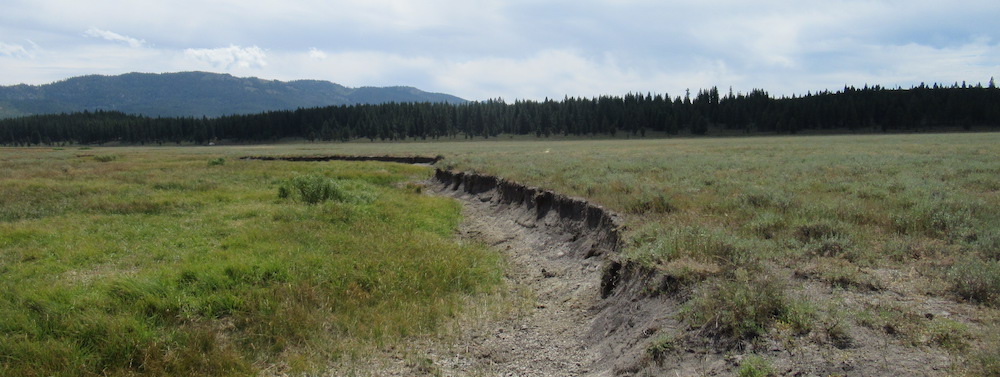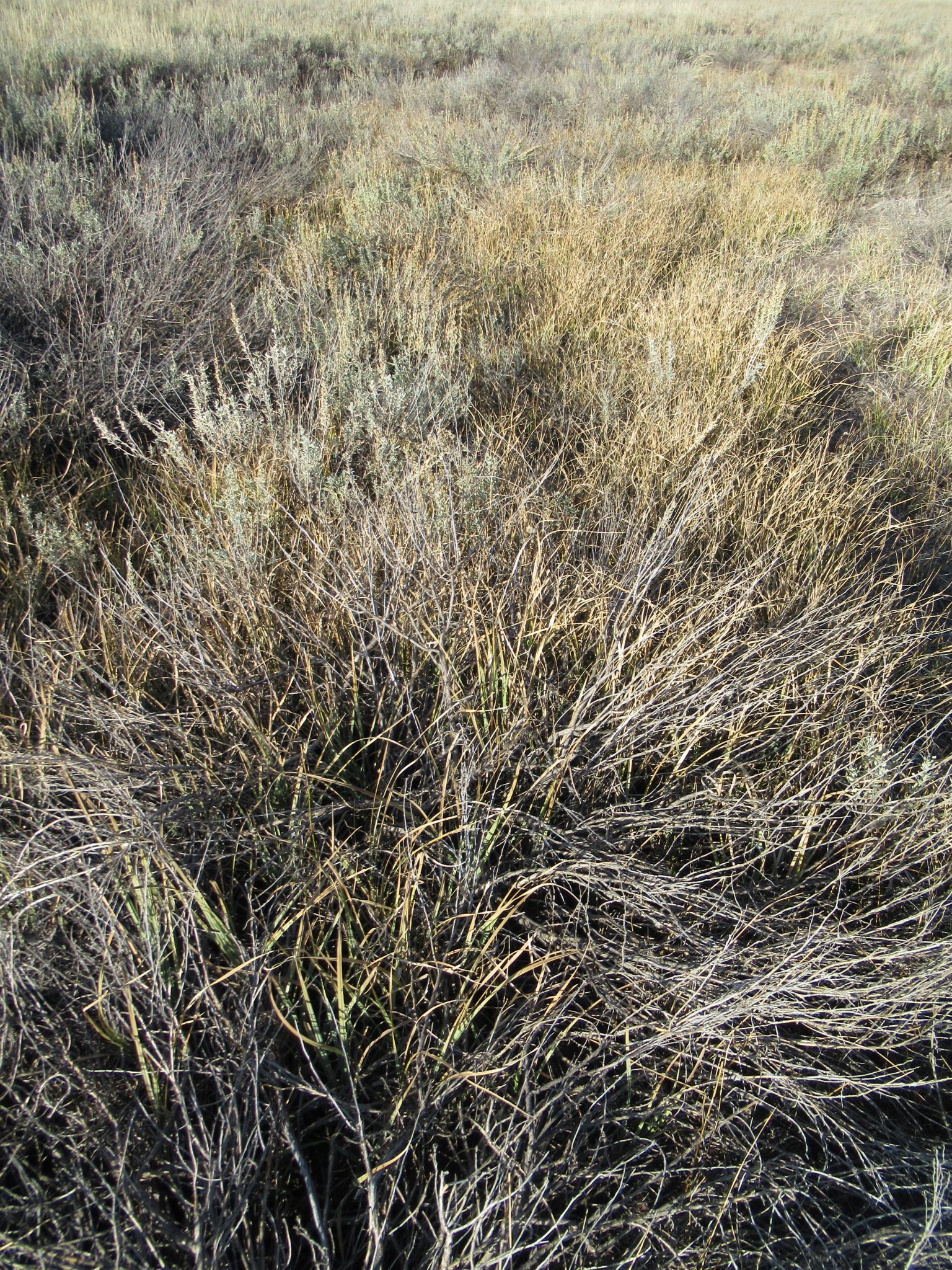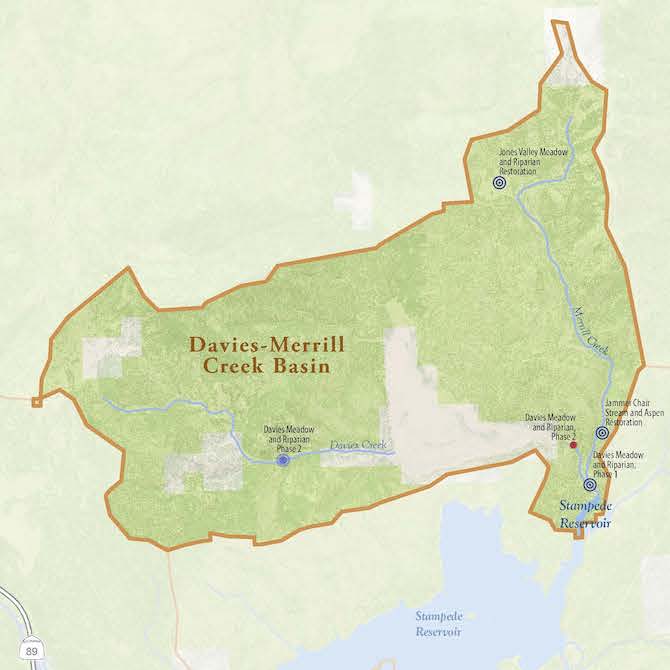Restoring Sardine Meadow in the heart of the Davies Creek watershed
Sardine Meadow is the largest meadow in the Davies Creek watershed, north of Stampede Reservoir. However, the meadow has been degraded through past logging, road- and railroad-grade construction, and historic grazing practices. What was once a lush wetland is now primarily a sagebrush plain. Davies Creek has been confined to a single, straightened channel – eroding into the meadow and providing little aquatic habitat.
In cooperation with the U.S. Forest Service, we have restored meadows along Davies Creek both upstream and downstream of Sardine Meadow. Now we have the opportunity to further improve the resilience of this watershed by bringing back Sardine Meadow.

Increasing resilience through restoration

350 acres of mountain meadow and three miles of stream restored
Restoring Davies Creek to natural channels on the meadow surface will reconnect the floodplain, elevate the shallow groundwater table, and allow wet meadow habitat to return
Revegetating meadowlands
Bringing back wetland plant species – like sedges and rushes – restores the meadow’s ability to sustain life.
Connecting habitats
Native species rely on Sierra Meadows and Sardine Meadow is an important link in a chain of meadow habitat in the northern Sierra – a critical migration corridor.
Defending from drought, fire, and flood
A healthy meadow holds onto water longer, releases it over time, providing a more steady stream – preventing flooding and mitigating drought. This wetter meadow also hinders fast moving wildfires.

Where it
all happens

Timeline

